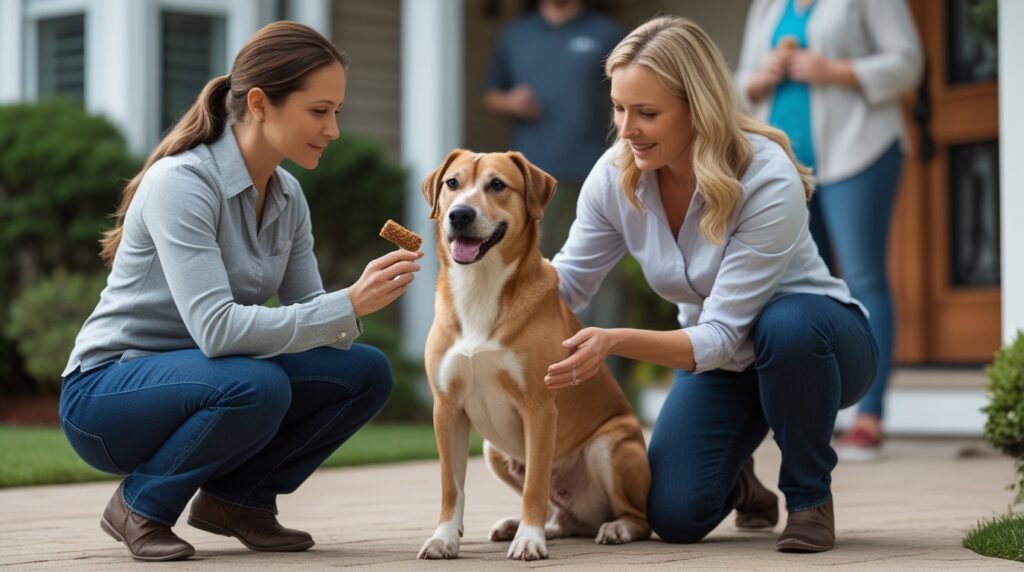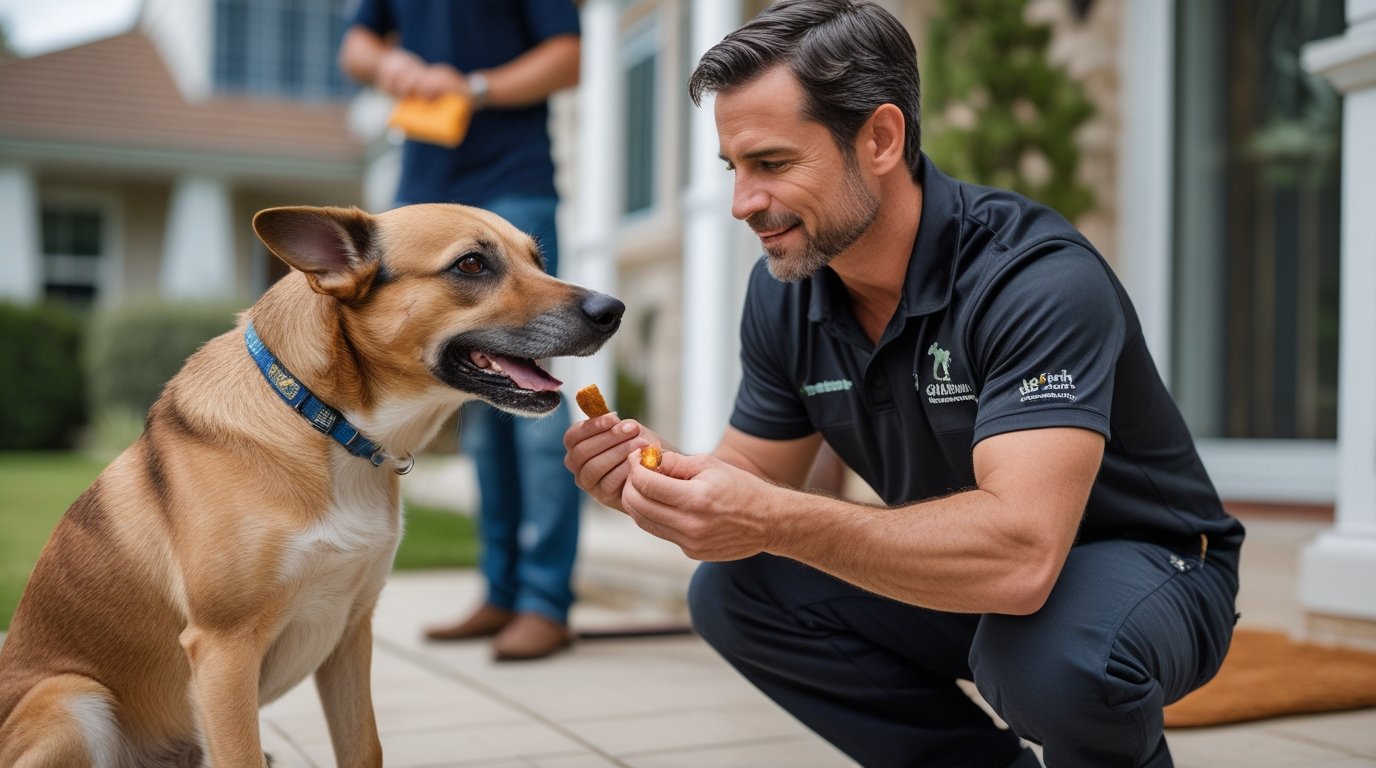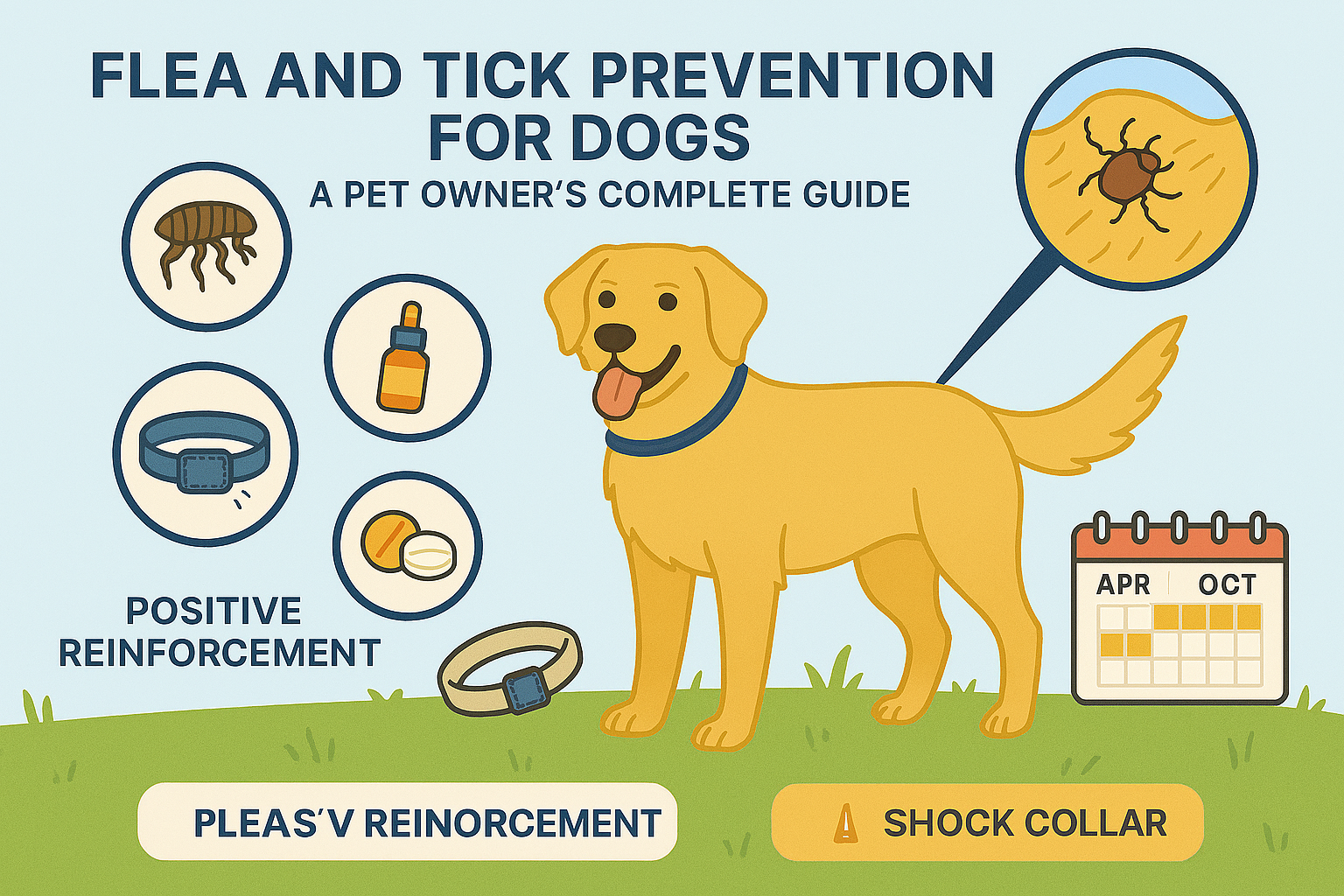Stop Excessive Dog Barking: An Expert’s Guide to a Quieter Home
A comprehensive interview with Dr. Sarah Mitchell, Certified Animal Behaviorist, on understanding and managing excessive dog barking.

Excessive dog barking is one of the most frustrating behavioral issues facing dog owners today. When your dog’s excessive dog barking becomes a daily struggle, it affects not only your household peace but also your relationship with neighbors and your pet’s well-being. To help address this widespread concern about excessive dog barking, we sat down with Dr. Sarah Mitchell, a certified animal behaviorist with over 15 years of experience in canine behavior modification, to discuss the root causes of excessive dog barking and evidence-based solutions that actually work.
Understanding the Language of Barks: What Your Dog is Really Saying
Dr. Mitchell, let’s start with the basics. What’s the difference between normal barking and excessive barking?
That’s an excellent question that many dog owners struggle with. Normal barking serves essential communication functions – alerting to visitors, expressing excitement during play, or responding to environmental stimuli. Typically, normal barking is situational, brief, and stops when the trigger is removed or addressed.
Excessive barking, on the other hand, is persistent, repetitive, and often continues long after the initial trigger has disappeared. It may occur at inappropriate times, such as constant barking at night, or be triggered by minimal stimuli. The key indicator is when excessive dog barking interferes with daily life – yours, your neighbors’, or your dog’s own well-being. Unlike normal barking, excessive dog barking becomes a pattern that disrupts normal household routines and community harmony.
How can dog owners identify the specific cause of their dog’s excessive barking?
Successful management of excessive dog barking requires detective work. I always advise owners to keep a “bark diary” for at least a week, noting when excessive dog barking occurs, duration, potential triggers, and the dog’s body language. This reveals patterns in excessive dog barking that aren’t immediately obvious to most pet owners.
The most common causes I encounter include:
- Boredom and understimulation: Dogs left alone for extended periods without adequate mental or physical exercise
- Anxiety and stress: Separation anxiety, fear-based responses, or generalized anxiety disorders
- Territorial behavior: Protecting their perceived territory from perceived threats
- Attention-seeking: Learned behavior where barking successfully gains owner attention
- Medical issues: Pain, cognitive decline, or hearing problems can trigger excessive vocalization
Understanding the root cause of excessive dog barking is crucial because different triggers require completely different management approaches. What works for attention-seeking excessive dog barking won’t be effective for anxiety-related excessive dog barking, which is why proper diagnosis is essential before beginning any training program.
Decoding the Bark: Understanding Different Types of Vocalizations
Proven Training Techniques to Manage Excessive Barking

What are the most effective, science-based training methods for reducing excessive dog barking in 2025?
Modern dog training emphasizes positive reinforcement and addressing underlying causes rather than simply suppressing symptoms of excessive dog barking. Here are the most effective approaches I recommend for managing excessive dog barking:
1. The “Quiet” Command Training
This foundational technique teaches dogs to bark on cue and then stop on command. Start by allowing your dog to bark naturally, then say “Quiet” in a calm, firm voice. The moment they pause (even briefly), immediately reward with treats and praise. Gradually extend the quiet duration before rewarding.
2. Desensitization and Counter-Conditioning
For trigger-specific excessive dog barking, gradually expose your dog to the stimulus at a low intensity while pairing it with positive experiences. For example, if your dog has excessive dog barking triggered by the doorbell, start by playing doorbell sounds at very low volume while giving treats, gradually increasing volume as your dog remains calm.
3. Environmental Management
Sometimes the simplest solutions are most effective. Block visual triggers with window film, use white noise machines to mask sound triggers, or create dedicated quiet spaces where your dog can retreat when overwhelmed.
Pro Tip: Consistency is crucial. All family members must use the same commands and reward system. Mixed messages will significantly slow progress and can worsen the behavior.
How important is addressing the underlying cause versus just managing the barking behavior itself?
Addressing underlying causes is absolutely essential for long-term success. If a dog has excessive dog barking due to separation anxiety, simply teaching them to be quiet won’t resolve their emotional distress – it may even worsen their anxiety by removing their primary coping mechanism. This is why treating excessive dog barking requires a comprehensive approach.
For anxiety-related barking, we need comprehensive behavior modification including:
- Gradual desensitization to departure cues
- Independence training exercises
- Environmental enrichment to reduce stress
- In severe cases, consultation with a veterinarian about anti-anxiety medications
For boredom-related excessive dog barking, increasing physical exercise and mental stimulation often eliminates the problem entirely. Puzzle toys, training sessions, and adequate daily exercise address the root cause of excessive dog barking rather than just the symptom.
Tools and Aids: What Works and What to Avoid
There are many anti-barking products on the market claiming to stop excessive dog barking. Which ones are safe and effective, and which should owners avoid?
This is where I see many dog owners make costly mistakes. Let me break down the most common options:
Effective and Humane Options:
- Puzzle toys and enrichment: Address boredom-related excessive dog barking by providing mental stimulation
- White noise machines: Mask trigger sounds effectively
- Calming aids: Thundershirts, pheromone diffusers, and calming supplements can help reduce anxiety-related excessive dog barking
- Professional training tools: When used correctly under professional guidance, head halters and no-pull harnesses can help manage reactive barking during walks
Controversial or Potentially Harmful Options:
Important Warning: Shock collars and other punishment-based devices can worsen anxiety-related excessive dog barking and may cause additional behavioral problems. They don’t address the underlying cause of excessive dog barking and can damage the human-dog bond.

Citronella collars are often marketed as “humane,” but they can still cause stress and may not be effective for determined barkers. Ultrasonic devices rarely work consistently and can disturb other pets in the household.
When should dog owners seek professional help rather than trying to manage the problem themselves?
I recommend professional intervention when excessive dog barking:
- Has persisted despite consistent training efforts for 4-6 weeks
- Is escalating or accompanied by aggression
- Creates legal issues with neighbors or housing authorities
- Shows signs of severe anxiety or stress
- Occurs alongside multiple behavioral issues simultaneously
- Makes the owner feel overwhelmed or unsafe
Professional animal behaviorists can identify subtle triggers owners might miss in cases of excessive dog barking and create customized behavior modification plans. We also have access to specialized tools and techniques for treating excessive dog barking that aren’t readily available to the general public.
Prevention Strategies: Setting Your Dog Up for Success
Prevention is always easier than correction. For new dog owners or those getting additional pets, consider these proactive strategies:
Puppy Socialization
Proper socialization during the critical period (3-14 weeks) helps prevent fear-based barking later. Expose puppies to various sounds, sights, and experiences in positive contexts.
Establishing Routines
Dogs thrive on predictability. Consistent daily routines for feeding, exercise, and training reduce anxiety and the likelihood of attention-seeking behaviors.
Mental and Physical Exercise
A tired dog is generally a quiet dog. Ensure your pet receives adequate physical exercise and mental stimulation daily. The amount varies by breed, age, and individual needs, but most dogs require at least 30 minutes of physical activity and 15-20 minutes of mental exercise daily.
The Role of Breed and Individual Differences
Do certain breeds bark more than others, and how should this influence management strategies?
Absolutely. Some breeds were specifically developed for vocalization – terriers for alerting to vermin, herding breeds for controlling livestock, and guardian breeds for deterring intruders. Understanding your dog’s genetic predispositions helps set realistic expectations.
However, individual personality often matters more than breed. I’ve worked with quiet Beagles and vocal Golden Retrievers. The key is working with your individual dog’s temperament and needs rather than making breed-based assumptions.
For naturally vocal breeds, management focuses on teaching appropriate times and durations for barking rather than complete elimination. For example, teaching a terrier to alert with 2-3 barks then stop on command is more realistic than expecting complete silence.
Long-term Success and Maintenance
Behavioral change requires patience and consistency. Most owners see initial improvement within 2-3 weeks of consistent training, but complete behavior modification can take 3-6 months or longer for complex cases.
Success Tip: Celebrate small victories. If your dog previously barked for 20 minutes and now stops after 5 minutes, that’s significant progress worth acknowledging and rewarding.
Maintenance is crucial. Even after successful training, occasional “refresher” sessions help prevent regression. Environmental changes, stress, or health issues can trigger temporary setbacks, but dogs with solid foundation training typically recover quickly.
For additional resources on managing related behavioral issues, the American Humane Society offers comprehensive guides on canine behavior modification techniques.
Conclusion: Creating Harmony in Your Home
Managing excessive dog barking requires understanding, patience, and the right approach for your individual dog’s needs. By identifying triggers, addressing underlying causes, and implementing consistent training techniques, most owners can significantly reduce problematic excessive dog barking while maintaining their dog’s natural communication abilities.
Remember that barking is natural canine behavior – our goal with excessive dog barking isn’t complete elimination but rather teaching appropriate expression. With dedication and the right strategies for managing excessive dog barking, you can create a peaceful home environment that works for both you and your four-legged family member.
The investment in proper training pays dividends in strengthened bonds, reduced stress, and improved quality of life for everyone in your household. When in doubt, don’t hesitate to seek professional guidance – early intervention is always more effective than waiting until problems become entrenched.
Frequently Asked Questions (FAQ)
How long does it typically take to see improvement in excessive dog barking?
Most dogs show initial improvement within 2-3 weeks of consistent training. However, complete behavior modification can take 3-6 months or longer, depending on the underlying cause and the dog’s individual characteristics. Patience and consistency are key to long-term success.
Is it ever too late to train an older dog to bark less?
It’s never too late to modify behavior, though older dogs may take longer to change established patterns. Senior dogs can still learn new behaviors, but the approach may need adjustment for physical limitations or cognitive changes. Professional guidance is especially valuable for older dogs with ingrained habits.
Should I ignore my dog when they bark for attention?
For attention-seeking barking, ignoring can be effective, but it often gets worse before it gets better (called an “extinction burst”). You must be completely consistent – any attention during barking reinforces the behavior. Instead, teach an alternative behavior like sitting quietly and reward that instead.
Can medical issues cause excessive barking?
Yes, various medical conditions can contribute to excessive barking, including pain, cognitive dysfunction in senior dogs, hearing problems, and hormonal imbalances. If barking behavior changes suddenly or is accompanied by other symptoms, consult your veterinarian to rule out medical causes before focusing on behavior modification.
How do I handle neighbors complaining about my dog’s barking?
Address neighbor concerns promptly and professionally. Acknowledge the problem, explain the steps you’re taking to resolve it, and provide a timeline for expected improvement. Consider providing your contact information and keeping them updated on progress. Some areas have mediation services for neighbor disputes that can be helpful.




